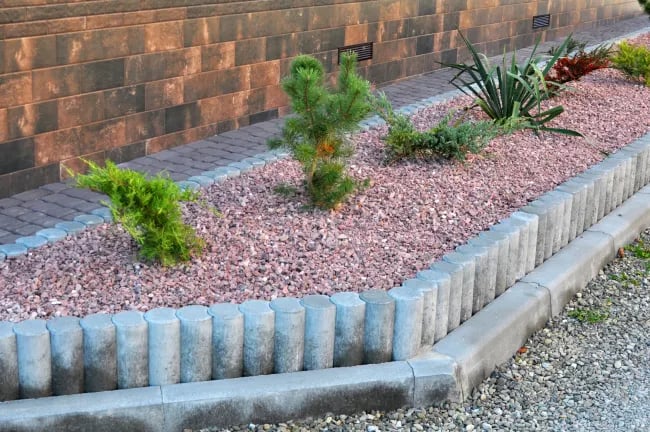The Bedrock of Commercial Architecture
Building stone has long been the cornerstone of architectural marvels throughout history. Its enduring significance in modern commercial construction is a testament to its aesthetic appeal and unmatched durability. This blog dives into the essential aspects of building stone, emphasizing its role in ensuring both the aesthetic and structural integrity of commercial structures.
Understanding Building Stone
Building stone includes a variety of natural stones, each chosen for their unique qualities and enduring nature. These stones have graced the facades and foundations of iconic structures around the world, showcasing their resilience and timeless beauty.
Key Factors Influencing Stone Durability
Type of Stone: Natural vs. Fabricated
When choosing materials for commercial construction, the decision between natural stone and fabricated alternatives is pivotal. While both have their applications, natural stone often emerges as the superior choice for several reasons:
- Durability: Natural stone is inherently more durable than most fabricated stones. These stones are formed over thousands, if not millions, of years under the earth’s surface through natural processes. This long formation process contributes to their strength and durability, making them suitable for high-load and high-traffic environments. Granite, for instance, is renowned for its hardness and minimal porosity, which makes it exceptionally durable and resistant to wear and tear.
- Aesthetics: Natural stone offers unique textures and colors that are difficult to replicate with fabricated products. Each piece of natural stone is one of a kind, providing a distinct character to building facades, interiors, and landscaping. Limestone and marble, while also beautiful, have been made more practical for diverse uses through modern sealing technologies that reduce their traditional maintenance needs.
- Maintenance and Longevity: Despite common misconceptions, natural stone is not necessarily high maintenance. Modern treatments and installation techniques have simplified the upkeep of even the more porous stones like limestone and marble. Natural stone's ability to age gracefully, often enhancing its character over time, contrasts with fabricated materials that might degrade or fade.
- Cost-Effectiveness: Initially, natural stone might appear more expensive than fabricated options. However, considering its durability and the infrequency of replacement, natural stone offers a better return on investment over time. The elegance and durability of natural stone can also increase the property value, making it a financially savvy choice in the long run.
Environmental Exposure
Environmental factors such as climate, weather, and pollution can impact the longevity of building stone. However, natural stone inherently withstands these elements better than many manufactured products. The natural aging of stone may include slight color changes and surface wear, which often enhance the stone’s natural character without compromising its structural integrity.
Physical & Chemical Properties
- Physical Properties: The density and porosity of stone influence its water absorption and frost resistance. Natural stone, when properly selected and installed, provides excellent resistance to environmental stresses.
- Chemical Properties: Natural stone's reaction to environmental pollutants, including acid rain, can be mitigated with proper preventative treatments, ensuring the stone's preservation over time.
Installation and Maintenance: Prolonging Stone Durability
Proper installation is crucial for maximizing the durability of building stone. Techniques that ensure good drainage and correct bedding can significantly extend the life of stone structures. Regular maintenance, such as cleaning and occasional resealing, helps preserve the stone’s beauty and structural integrity.
Sustainable Considerations in Stone Selection
The sustainability of using natural stone includes responsible quarrying practices and considering the full lifecycle of the material. From extraction through to installation and maintenance, sustainable practices enhance the environmental credentials of building stone.
The Lasting Legacy of Building Stone
Choosing building stone for commercial construction is a decision that balances aesthetics, durability, and sustainability. Architects, builders, and developers are encouraged to select stones not only for their immediate impact but for their long-term durability and minimal maintenance needs.
Natural stone stands out for its ability to endure through generations, often outlasting the very buildings it adorns. Its natural variation and resilience make it an ideal choice for commercial projects aiming for longevity and timeless beauty.
By selecting the right type of stone, implementing effective installation practices, and adhering to maintenance recommendations, construction professionals can maximize the potential of building stone, ensuring that commercial projects are not only visually stunning but built to last.








![All About Soil Compaction: Causes, Challenges & Solutions [A Guide]](https://4445234.fs1.hubspotusercontent-na1.net/hub/4445234/hubfs/Imported_Blog_Media/plants-2411458_1920-1024x683.jpg?width=725&name=plants-2411458_1920-1024x683.jpg)
